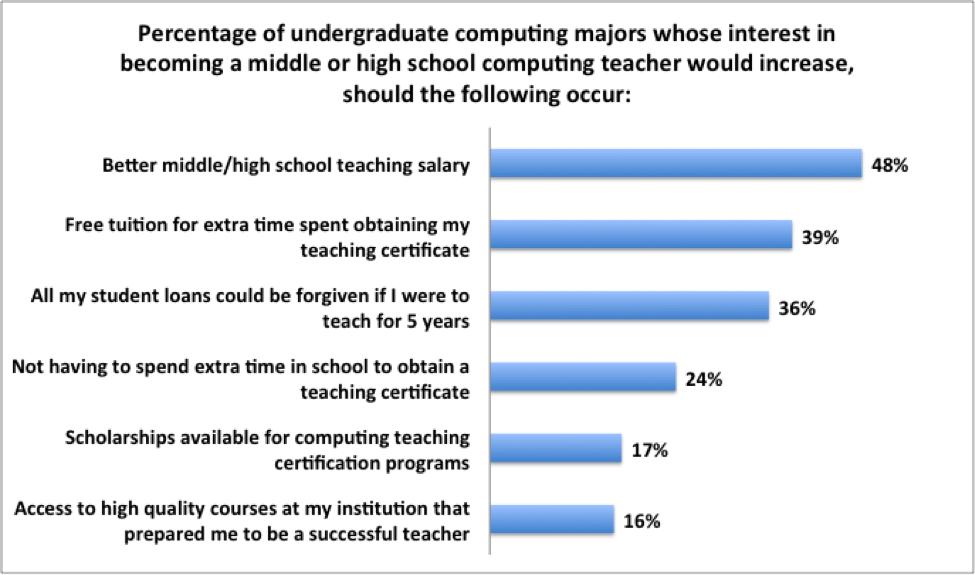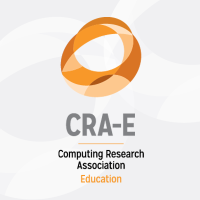Factors that Increase Students’ Interest in Becoming a Middle or High School Computing Teacher

CERP asked undergraduate computing majors what would increase their interest in becoming a middle or high school computing teacher. As seen in the above graphic, financial incentive in the form of a higher teaching salary, free tuition for teacher training, and forgiven student loans were the top factors increasing students’ interest in becoming a middle or high school computing teacher. These findings provide insights into how to generate more computing educators for the K-12 school system, which is becoming increasingly important, given recent efforts to promote widespread K-12 computing education.
Notes. Data were collected from 2,745 undergraduate students who were majoring in a computing field. Computing majors included computer science, computer information systems/informative, bioinformatics, computing and business, information technology, computer engineering, and other fields with a strong computing component. Students were asked Which of the following would increase the likelihood that you would prepare to become a middle or high school computing teacher?, and provided with factors displayed in the figure, to be rated using the following scale: (1) No increase, (2) Increase a little, (3) Increase somewhat, (4) Increase quite a bit, (5) Increase very much. Percentages of students who responded with either “increase quite a bit” or “increase very much” are displayed in this visualization.

This analysis is brought to you by the CRA’s Center for Evaluating the Research Pipeline (CERP). CERP provides social science research and comparative evaluation for the computing community. To learn more about CERP, visit our website at https://cra.org/cerp/.
This material is based upon work supported by the National Science Foundation under Grant Number (CNS-1246649; and/ or DUE-1431112). Any opinions, findings, and conclusions or recommendations expressed in this material are those of the author(s) and do not necessarily reflect the views of the National Science Foundation.









